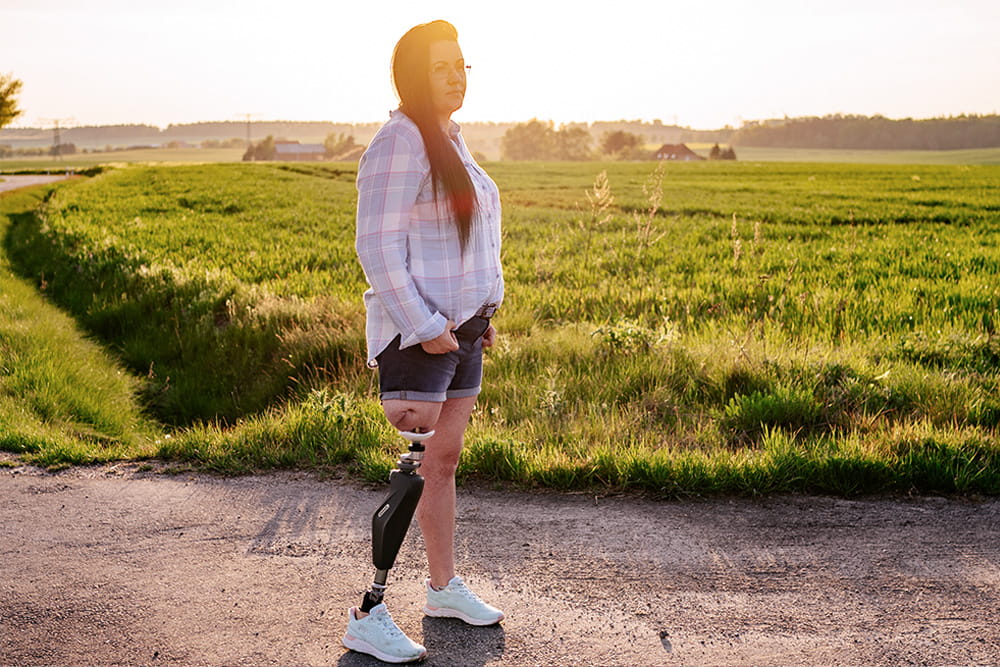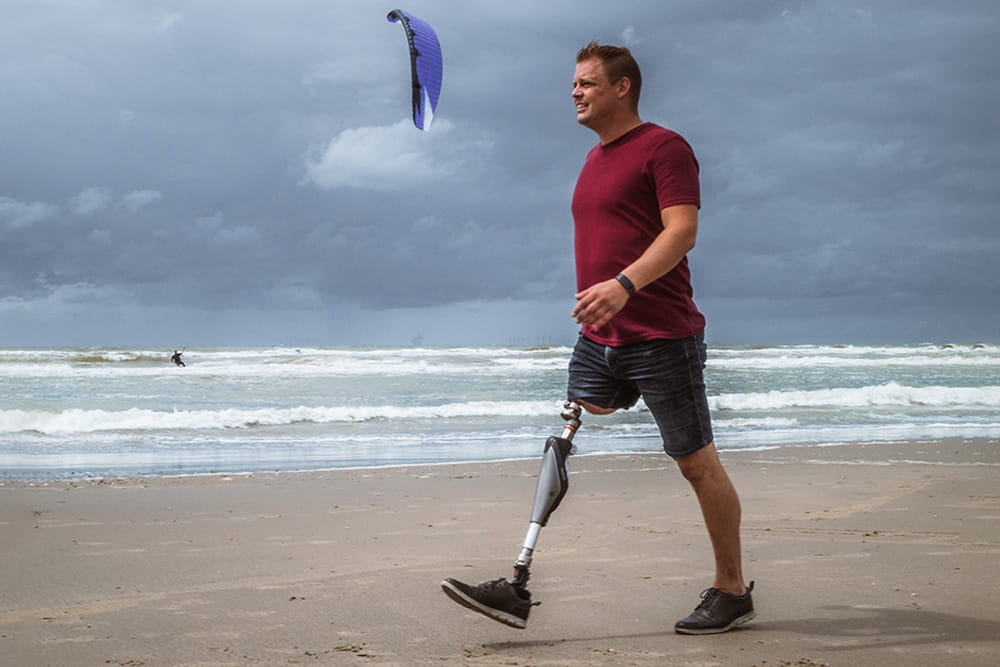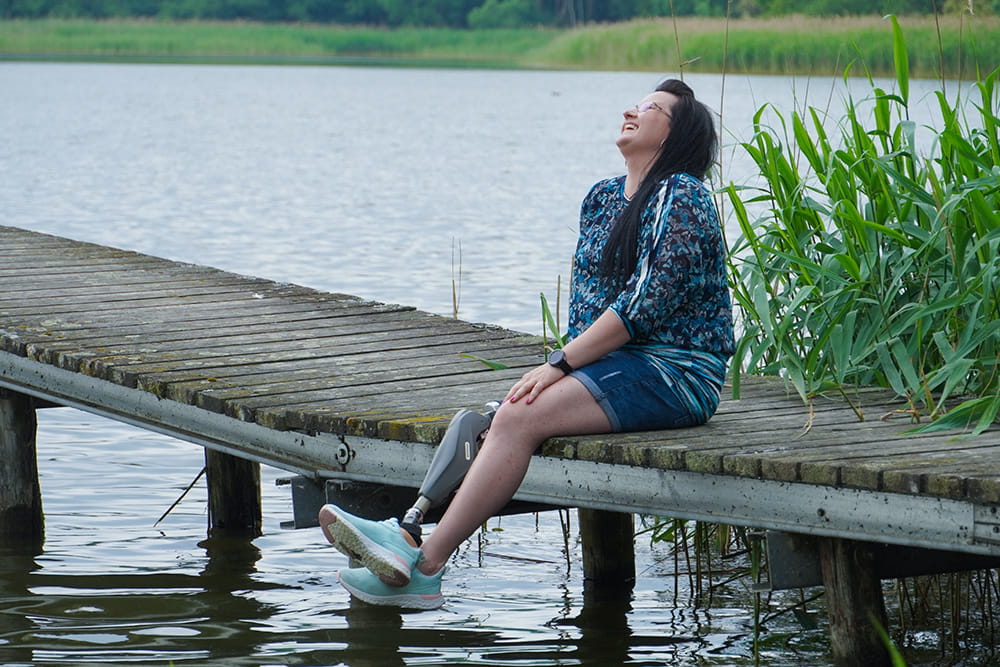 Anika in the backlight
Anika in the backlight
For whom are endo-exo prostheses suitable?
A large number of transfemoral and transtibial amputees can be optimally fitted with the conventional prosthetic technology. Nevertheless, some people have problems with conventional residual limb fitting, so that they may not be able to wear their prosthesis every day.
The most common problems are volume fluctuations of the residual limb and skin irritations that reduce wearing comfort. We offer interested people and those affected the opportunity to learn about endo-exo fittings.
We would be happy to advise you on possible cost assumptions.
How does an endo-exo procedure work?
We are happy to provide you with interdisciplinary advice on all technical aspects of endo-exo treatment, even before a possible operation. A detailed medical history is always taken, the advantages and disadvantages of this fitting are presented and discussed, and an optimal solution is worked out for you. If possible, contacts to endo-exo prosthesis wearers are arranged, similar to the peer concept for amputees.
The fitting of an endo-exo prosthesis requires a maximum of two surgical steps. First, the residual limb is surgically prepared, then the socket is implanted into the bone and everything is prepared for further steps. In the two-step procedure, after solid ingrowth after 4 – 6 weeks, the second step is realised, in which the skin over the endoprosthesis is surgically opened to allow coupling of the modern exoprostheses via a connecting piece. After this second step and always in consultation with the surgeon, the first fitting of the exoprosthesis is soon carried out by our experienced team. Your first attempts at standing and walking will be accompanied by our experienced physiotherapists. Of course, we will also support you during rehabilitation, e.g. with our service of walking school, and simply organise everything.
 source: www.otnimplants.nl
source: www.otnimplants.nl
 Anika on the bar
Anika on the bar
Advantages of an endo-exo prosthesis
Do you have any questions?
Feel free to contact us!
Additional Services